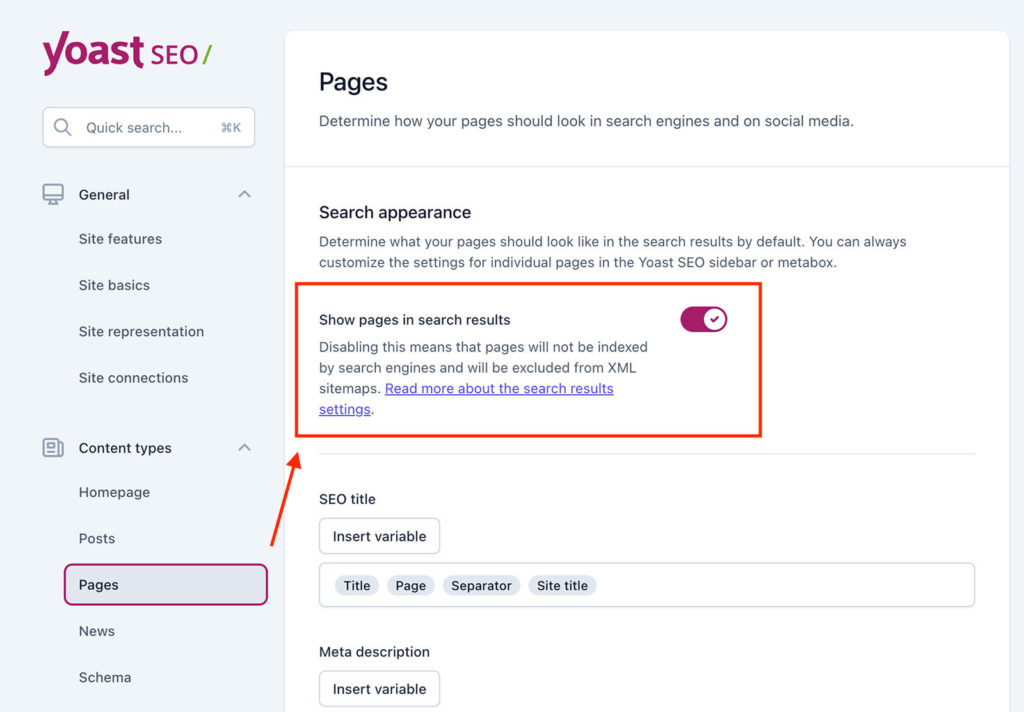
Si vous n'êtes pas encore familiarisé avec ce terme, dans le paysage complexe du développement web et de l'optimisation des moteurs de recherche (SEO), il est primordial pour les webmasters de comprendre l'importance de la directive "noindex" dans la balise méta robots. Intégrée au code source HTML des pages web, la balise méta robots fournit des instructions aux robots d'indexation des moteurs de recherche sur la manière d'interagir avec le contenu et de l'indexer. Lorsque les webmasters doivent résoudre des problèmes liés à l'indexation ou contrôler la visibilité de pages spécifiques, la directive "noindex" devient un outil essentiel de leur arsenal.
La directive "noindex" est un mécanisme puissant qui permet aux webmasters d'empêcher les robots des moteurs de recherche, tels que Googlebot, d'indexer certaines pages ou certains contenus de leur site web. En déployant stratégiquement la directive "noindex", les webmasters peuvent effectivement masquer des pages dans les pages de résultats des moteurs de recherche (SERP), en s'assurant que les contenus sensibles ou non pertinents n'apparaissent pas aux utilisateurs effectuant des recherches en ligne. Cette directive complète également d'autres directives telles que "nofollow", qui demande aux robots des moteurs de recherche de ne pas suivre les liens d'une page, ce qui permet de sculpter le flux de PageRank et d'améliorer la stratégie globale de référencement du site.
En matière de marketing numérique et de gestion du site webIl est donc essentiel de maîtriser la mise en œuvre de la balise méta robots, ainsi que son équivalent, l'en-tête HTTP "X-Robots-Tag". L'en-tête "X-Robots-Tag" offre une approche plus avancée de la définition des directives au niveau HTTP, ce qui permet aux webmasters d'exercer un contrôle granulaire sur le comportement de l'indexation. En outre, des outils tels que l'inspection des URL de Google permettent aux webmasters de valider et d'analyser la manière dont les robots d'indexation des moteurs de recherche interprètent ces directives, ce qui leur permet d'affiner les paramètres d'indexation de leur site web afin d'obtenir des performances optimales.

Pour les blogueurs et les créateurs de contenu, la directive "noindex" de la balise méta robots joue un rôle crucial dans la gestion de la visibilité des différents articles ou pages. En appliquant de manière sélective la directive "noindex", les blogueurs peuvent contrôler le contenu qui apparaît dans les résultats de recherche, ce qui leur permet de façonner leur présence en ligne et de maximiser l'impact de leurs efforts de marketing numérique. En outre, le fait de savoir comment combiner la directive "noindex" avec d'autres directives telles que les balises méta "disallow" ou "nonindex" améliore l'efficacité des stratégies d'optimisation des sites web, ce qui permet aux webmasters de naviguer dans les complexités du référencement avec confiance et précision.
Pour supprimer la directive "noindex" de la balise méta "robots" d'un site web WordPress, vous pouvez suivre les étapes suivantes :
Table des matières
1. Vérifiez les paramètres de votre plugin SEO
Si vous utilisez un plugin SEO comme Yoast SEO, All in One SEO ou Rank Math, vérifiez les paramètres du plugin pour vous assurer que la directive "noindex" n'est pas ajoutée par le plugin. Ces plugins disposent souvent d'options permettant de contrôler la balise méta du fichier robots.txt pour des pages individuelles ou pour l'ensemble du site.

Par exemple, en Yoast SEO:
- Allez dans votre tableau de bord WordPress,
- cliquez sur 'SEOdans la barre latérale,
- puis sélectionnez 'Apparition de la recherche.'
- Dans la rubriqueTypes de contenu' onglet,
- trouver le type de contenu (par exemple, les articles ou les pages) à l'aide de l'attribut 'noindexDirective
- et définir la valeur 'Afficher [type de contenu] dans les résultats de recherche ?' à 'Oui.'
- Si vous souhaitez modifier les paramètres d'une page ou d'un article individuel, éditez la page ou l'article, faites défiler vers le bas jusqu'à la boîte méta Yoast SEO,
- cliquez sur le boutonAvancé' onglet,
- et définir la valeur 'Autoriser moteurs de recherche pour afficher ce [type de contenu] dans les résultats de recherche ?' à 'Oui.'
2. Vérifiez le fichier header.php de votre thème
Certains thèmes WordPress peuvent ajouter par défaut la directive "noindex" dans la balise méta "robots". Pour vérifier et supprimer cette directive :

- Allez dans votre tableau de bord WordPress et naviguez jusqu'à 'Apparence' > 'Editeur de thème.'
- Dans la rubriqueFichiers thématiquesDans la section ' à droite, trouvez et cliquez sur 'en-tête.phppour la modifier.
- Localisez la rubrique 'robots' avec la balise métanoindexdans le code. Il se présentera comme suit :
- <meta name=”robots” content=”noindex, follow” />
- Retirer le 'noindex' de l'attribut content pour que cela ressemble à ceci :
- <meta name=”robots” content=”follow” />
- Sauvegardez les modifications en cliquant sur le bouton '.Fichier de mise à jourLe bouton ''.
3. Vérifier les paramètres de lecture dans WP
Veillez à ce que l'option 'Visibilité sur les moteurs de rechercheL'option ' dans les paramètres de lecture de WordPress n'est pas activée, car elle ajoutera un 'noindexà l'ensemble de votre site web.

- Allez dans votre tableau de bord WordPress et naviguez jusqu'à 'Paramètres' > 'Lecture.'
- Faites défiler vers le bas jusqu'à la rubriqueVisibilité sur les moteurs de rechercheet assurez-vous que la case à cocher située à côté de 'Décourager les moteurs de recherche de l'indexation de ce siten'est pas cochée.
- Cliquez sur l'icôneEnregistrer les modificationsLe bouton ''.
Après avoir effectué ces changements, la directive "noindex" doit être supprimée de la balise méta "robots". Gardez à l'esprit que les moteurs de recherche peuvent prendre un certain temps pour explorer votre site et mettre à jour leur index. Vous pouvez également demander un recalage en utilisant la fonction Console de recherche Google pour accélérer le processus.
Conclusion
La suppression de la directive "noindex" de la balise méta "robots" de WordPress peut être réalisée en vérifiant et en ajustant les paramètres de votre plugin SEO, en inspectant le fichier header.php de votre thème et en vous assurant que l'option "Visibilité pour les moteurs de recherche" dans les paramètres de lecture est désactivée. En suivant ces étapes, vous pouvez vous assurer que les moteurs de recherche indexent correctement votre site web WordPress, ce qui lui permet d'apparaître dans les résultats de recherche. Gardez à l'esprit que les modifications peuvent prendre un certain temps avant d'être répercutées dans les index des moteurs de recherche ; soyez donc patient et envisagez de demander un nouveau balayage par l'intermédiaire de Console de recherche Google Si vous n'êtes toujours pas sûr de pouvoir supprimer la balise méta noindex dans les robots méta, faites appel à un webmaster qui propose des services liés au référencement et qui vous aidera à gérer votre site web sans problème.
FAQ
Comment supprimer la balise noindex dans Wordpress ?
Publié le : 2023-03-31
Mise à jour le : 2024-07-15